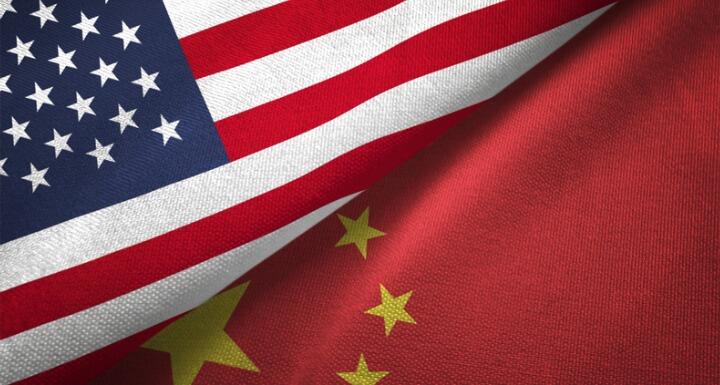A result of negotiating techniques from Donald Trump's book "The Art of the Deal" or a result of strategies from the ancient Chinese military strategy treatise "The Art of War"?
Who knows, but on January 15, 2020, the United States ("U.S.") and China signed Phase One of the Economic and Trade Agreement between the U.S. and China (the "Agreement"). The Agreement, which is set to go into force on February 14, 2020, attempts to end or at least ease the trade war tensions between the world's two economic behemoths. The Agreement, amongst other issues, addresses protection and enforcement of U.S. intellectual Property ("IP") rights in China. While the Agreement does not resolve all IP protection and enforcement concerns faced by U.S. businesses in China, it is certainly a step in the right direction.
The importance of IP in establishing a fair and balanced bilateral economic and trade relationship is evident in the fact that the entire first two chapters of the Agreement are dedicated to IP protection and enforcement in China. The Agreement addresses numerous areas of IP, including trade secrets, pharmaceutical related IP, patents, piracy and counterfeiting, trademarks, technology transfer, and other related topics.
The Agreement puts much of the responsibility on China to revamp its laws and develop new policies and procedures to implement the provisions of the Agreement and to address the long-standing concerns that have existed with regard to protection and enforcement of U.S. IP in China.
Discussed below are some of the areas under the Agreement where China has agreed to implement new laws and procedures to protect U.S. intellectual property. In return, the U.S. has agreed to affirm that it already has equivalent or similar protection and enforcement mechanisms in place.
Trade Secrets
- The definition of trade secret is expanded to include confidential business information.
- The scope of acts that constitutes trade secret misappropriation is broadened to include electronic intrusions, breaches or inducement of a breach of duty not to disclose, and other unauthorized disclosures or uses.
- Implements burden-shifting in civil proceedings, shifting to the accused party where the holder of a trade secret has produced evidence of a reasonable indication of trade secret misappropriation by the accused party.
- Adopts provisional measures to prevent the use of misappropriated trade secrets.
- Eliminates the requirement that the holder of a trade secret establishes actual losses prior to initiation of a criminal investigation for misappropriation.
- Provides for the application of criminal procedures and penalties to address willful trade secret misappropriation through theft, fraud, physical or electronic intrusion for an unlawful purpose.
- Prohibits the unauthorized disclosure of undisclosed information, trade secrets, or confidential business information by government personnel involved in government proceedings in which such information is submitted and provides criminal, civil, and administrative penalties for such unauthorized disclosure.
Pharmaceutical-Related Intellectual Property
- Permits pharmaceutical patent applicants to rely on supplemental data to satisfy relevant requirements for patentability, during patent examination proceedings, patent review proceedings, and judicial proceedings.
- Provides (a) a system to provide notice to a patent holder, licensee, or holder of marketing approval, that a person is seeking to market that product during the term of an applicable patent claiming the approved product or its approved method of use; (b) adequate time and opportunity for such a patent holder to timely seek available remedies; and (c) procedures for judicial or administrative proceedings and expeditious remedies, for resolution of disputes concerning the validity or infringement of an applicable patent claiming an approved pharmaceutical product.
- With regard to pharmaceutical-related patents on new products and methods of use, provides an extension of the patent term, due to unreasonable curtailment of the patent term as a result of the marketing approval process, of up to five years, and may limit the resulting effective patent term to no more than 14 years from the date of marketing approval in China.
Patents
- Provides patent term extensions to compensate for unreasonable delays that occur in granting the patent or during pharmaceutical product marketing approvals. For this provision, an unreasonable delay shall at least include a delay in the issuance of the patent of more than four years from the date of filing, or three years after a request for examination of the application, whichever is later.
Piracy and Counterfeiting on E-Commerce Platforms
- Provides enforcement procedures that permit effective and expeditious action by right holders against infringement that occurs in the online environment, including an effective notice and takedown system to address infringement.
- Provides that e-commerce platforms may have their operating licenses revoked for repeated failures to curb the sale of counterfeit or pirated goods.
Geographical Indications
- Provides that when determining whether a term is generic in China, how consumers understand the term in China will be taken in to account.
Manufacture and Export of Pirated and Counterfeit Goods
- Provides effective and expeditious enforcement action against the related products of counterfeit medicines and biologics, including active pharmaceutical ingredients, bulk chemicals, and biological substances.
- Sharing with the U.S. the registration information of pharmaceutical raw material sites that have been inspected and that comply with the requirements of Chinese laws and regulations; and publishing data on enforcement measures, including seizures, revocations of business licenses, fines, and other actions taken by the National Medical Products Administration, Ministry of Industry and Information Technology, or any successor entity.
- Significantly increasing the number of enforcement actions and publishing data online on the measurable impact of these actions each quarter.
- Seizing and destroying counterfeit or pirated goods, including the materials and implements used in the manufacture or creation of such pirated or counterfeit goods.
- Requiring a counterfeiter to pay right holders the profits from infringement or damages adequate to compensate for the injury from the infringement.
- Increase the number of trained personnel to inspect for counterfeit and pirated goods.
- Ensure that all government agencies and all entities that the government owns or controls install and use only licensed software.
Trademarks
- Provide for criminal enforcement if there is "reasonable suspicion" based on articulable facts that a criminal violation of an intellectual property right has occurred.
- Provide civil and criminal penalties sufficient to deter future intellectual property theft or infringements.
Implementation
- Within 30 working days after the date of entry into force of this Agreement, China will present an action plan to strengthen intellectual property protection and shall include measures that China will take to implement its obligations and the date by which each measure will go into effect.
Technology Transfer
- Provides that U.S. businesses are able to operate openly and freely in China without any force or pressure to transfer key technology as a requirement for operating in China.
What does this all mean? Well it's hard to tell really at this point as the Agreement does not actually implement any new laws or regulations, but rather is a bunch of promises between China and the U.S. Until China implements new laws or regulations to fulfill its promises we can really only speculate on its true impact. Of course, implementation of new laws or regulations is only effective if there is suitable enforcement to back it up. However, most would agree that if China does fulfill its obligations we can expect to see stronger economic and trade relations between the U.S. and China, in particular giving U.S. businesses greater confidence and predictability in protecting and enforcing their IP rights in China.








